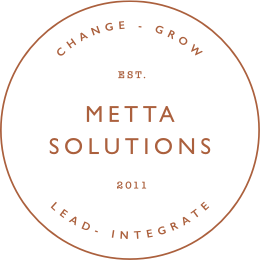When something’s not working in your workplace, how do you fix it?
Often, people look to leaders for solutions, but as a leader, it’s not necessarily your job to be a font of solutions. Rather, it’s your job to provide a framework for finding those solutions.
As we’ve discussed before, effective leaders build systems. The PDSA framework is your system for solving problems, putting ideas into practice and even building an innovative culture.
PDSA in practice
PDSA stands for the steps involved with this model: Plan, Do, Study, Act. And when it’s done, you go back to Plan, and the cycle begins anew.
The PDSA cycle is designed to facilitate testing small doses of change. You begin by outlining an objective and a solution to test (Plan), then try putting the solution into practice (Do), examine what you have learned (Study), then put your learnings into action (Act — often by modifying your solution and going through the cycle again).
If you have a science background, this might sound familiar to you. It’s essentially the scientific method. You develop a hypothesis (your plan), test your hypothesis, collect results, and draw a conclusion – which often shapes your next research question. The similarity is no accident. An evidence-based decision will serve you in leadership, just as an evidence-based decision serves you in the clinic, at the lab bench and in the field.
Before you begin, there are a few key questions that should guide your PDSA process. They are (with thanks to the Institute for Healthcare Improvement):
- What are you hoping to accomplish with this work?
- How will you define improvement?
- What change can you make that will lead to improvement?
There are a lot of PDSA resources available, including the IHI resource and this fillable form from the Agency for Healthcare Research and Quality, so I won’t repeat all the details here. But the idea is that the changes should be incremental, and the process repeatable. Over time, your organization operates and evolves in an iterative way – not upsetting the apple cart with wholesale, untested changes, but by reflexively trying new things and applying what you’ve learned.
Collaborative problem solving
In addition to bringing a clear methodology to decision-making, PDSA cycles are also conducive to collaboration. Here’s an example.
Suppose I’m a new department chair. I learn the faculty has not had any type of regular meeting in more than a year. I think we need to meet monthly so we can connect and communicate in a systematic way. When I float this idea, I meet with immediate resistance – everyone is busy and wary of committing.
I’m fairly certain I need to do something, but it’s possible monthly meetings are not the answer. And even if they are, I will have a much easier time if I gain buy-in. So, we all agree to try monthly meetings for a limited period of time – three months, and then we will reassess.
As part of our planning, we identify parameters for the meetings (for example, we will agree on agendas in advance, and meetings must include bi-directional information sharing – no one wants a monologue.) We also determine how we will measure success. We could survey the faculty or have a conversation about our experience. Whatever it is, we need to follow through.
And we all need to adapt based on what we learn. Everyone has a stake in the process, and the end result will be not an edict from the department chair, but a clear, evidence-based decision that speaks for itself.
Fail fast and fail often
It can be a little tricky putting your ideas to the test in this way. What if I am wrong?
Remember in my meeting example, I am a new leader. Perhaps I am experiencing a bit of impostor syndrome, or maybe something about the climate in my institution compels me to flex my authority. Maybe some people on my team seem skeptical of me. Did they want to see someone else hired?
I need to set these thoughts aside. PDSA is both a short-term, iterative process and a very long game for leaders.
The more you give people a stake in the process and a window into how you make decisions, the more they will trust the decisions you make, and feel ownership of the processes that are implemented as a result. And as the leader, you already had authority. Now you have also cultivated influence, too.
PDSA also gives people permission to innovate. It is a tool for encouraging ideas, keeping what works and tossing what doesn’t – without judgement. Fail fast, fail often, learn from it, and move onto the next idea. As you subject your own ideas to the microscope, accepting that failure is an acceptable risk, you’ll empower other people to do the same.
How do you test ideas?
Have you tried PDSA? Something else? Please share in the comments or on social!





